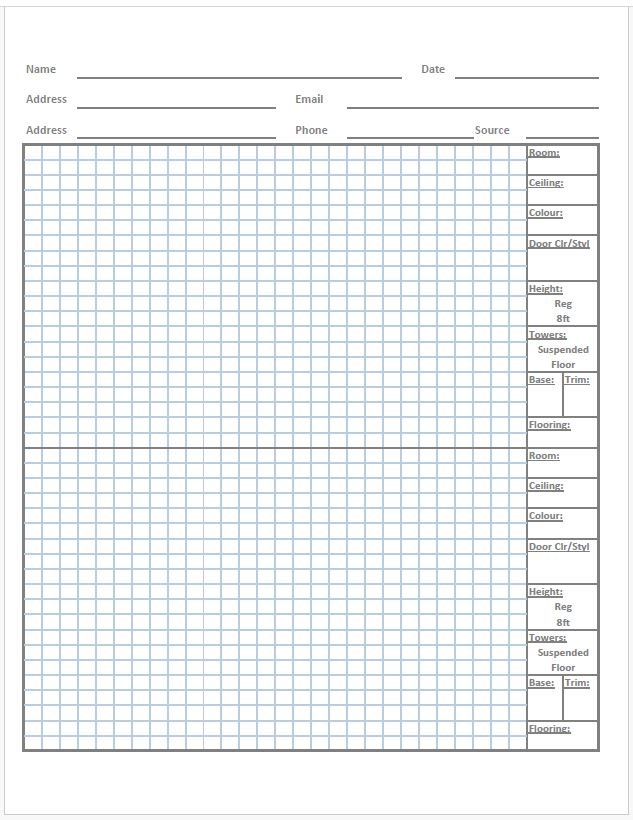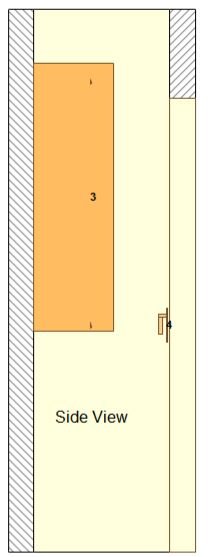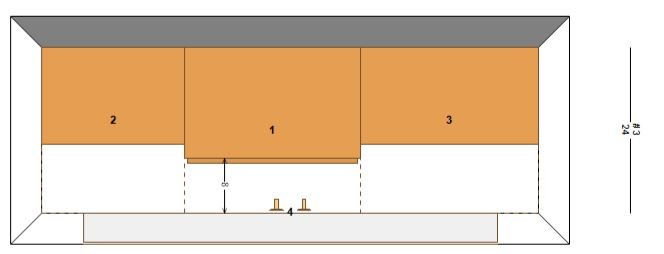This webinar has been created to provide Design Consultants with a foundational understanding of the key requirements for measuring closet organizer systems. While it doesn’t cover every detail needed to become a skilled estimator, it serves as a starting point for building further knowledge and expertise.
When conducting a closet estimate, it’s crucial for the Design Consultant to capture all the necessary details to create a design that fully meets the customer’s needs. While measuring, the Design Consultant should stay observant and note anything that could impact the closet organizer’s design.
Be sure to record the following:
- Measurements of all walls (up to the door molding)
- Width of the door molding
- Dimensions of the door opening
- Style of the door (e.g., Bi-pass, Bi-fold, Swing)
- Ceiling height
- Door opening height
- Height and thickness of the baseboard
- Size and location of any obstructions (e.g., light switches, outlets, floor vents, air returns, plumbing, security boxes, attic access, etc.)
Some Design Consultants use a tablet to input all the required information directly into their design software. While this can be time-consuming, it allows for real-time design modifications and often helps close sales more quickly. However, many consultants still prefer using a manual Estimate Worksheet, which allows them to record the closet’s size, shape, and critical information.
Below is an example of an Estimate Worksheet, which includes a side bar for quickly noting key details.


There’s no such thing as a “typical” closet but you will often run into something like the image below. Often, closets are overflowing with clothes and other items, and the customer is hoping the closet organizer will be a complete solution for their storage problems. However, this can be a challenge, especially if the space is undersized.

If the closet is spacious enough, aim to double the available hanging and shelving space. You may also want to suggest incorporating a built-in dresser. While this is ideal, it may not always be possible, and it’s the Design Consultant’s role to educate the customer on any limitations.
Take a close look at the existing closet to assess how much shelving, short hang, and long hang space is available. Note the linear feet of shelving, hanging, and any drawers. When designing the closet organizer, aim to at least match the current storage capacity, while ideally improving it. A good Design Consultant will be transparent with the customer, explaining the pros and cons of each design option.
- Declutter Regularly: Go through clothes seasonally or annually.
- Set Criteria: If you haven’t worn it in a year, or it no longer fits or feels good, consider letting it go.
- Capsule Wardrobe: Opt for versatile, timeless pieces that can be mixed and matched.
- One In, One Out: For each new item purchased, remove one.
- Digital Inventory: Keep a photo catalog of your wardrobe for reference.
- Focus on Quality: Invest in fewer, higher-quality pieces.
- Donation or Selling: Donate or sell what’s no longer needed.
- Swap with Friends: Host a clothing swap for a fresh wardrobe update.
- Identify Your Style: Keep pieces that fit your personal aesthetic.
- Limit Sentimental Items: Only keep a few sentimental pieces.
- Organize clothes by season and store out-of-season items.
- Use a separate closet for less frequently used clothing, like formal wear.
- Hang clothes with the hanger facing backward. After a set time (e.g., 6 months), donate any items still hung this way.
When designing shelving, increase unit widths in one-foot increments, as folded clothes typically occupy 1 ft x 1 ft. This allows you to neatly stack clothes next to each other, utilizing space efficiently. Avoid exceeding a shelf width of 41 inches, as shelves may start to sag beyond that point. Although some designers use 18-inch wide shelving, this often wastes space and doesn’t add value. The Design Consultant’s job is to deliver efficient, functional, and thoughtful design.
While slanted shoe shelves may look stylish, flat adjustable shelves are far more practical. Fully adjustable units allow you to move shelves to fit shoes of different heights, maximizing storage capacity. That said, keep in mind that some customers may prioritize aesthetics over practicality.
Customer needs vary, and so do preferences for drawer usage. One attendee of this webinar prefers folding clothes vertically in drawers, which allows easy access without rummaging. For most people, however, we recommend using drawers for socks and underwear—items that don’t stack well. Deep drawers can cause items to get buried, so open shelving often proves more efficient, allowing customers to see and access their clothing easily.
Always consider the door opening and header when designing. The door header, the wall above the door opening, can present challenges. For example, while an ideal reach-in closet depth is 24 inches, some closets may be shallower. With standard door heights at 80 inches and Sherwood Shelving closet systems measuring 86.417 inches (2195 mm), the unit will extend approximately 6.5 inches above the door opening. Designing cabinets too deep may make accessing the top shelf difficult.
Good design results in happy customers!


There are many details to keep in mind when designing a closet organizer. Using Sherwood Shelving’s Design Resources provides you with all the essential information at your fingertips, ensuring that each Design Consultant can create the best possible outcome for the customer.


